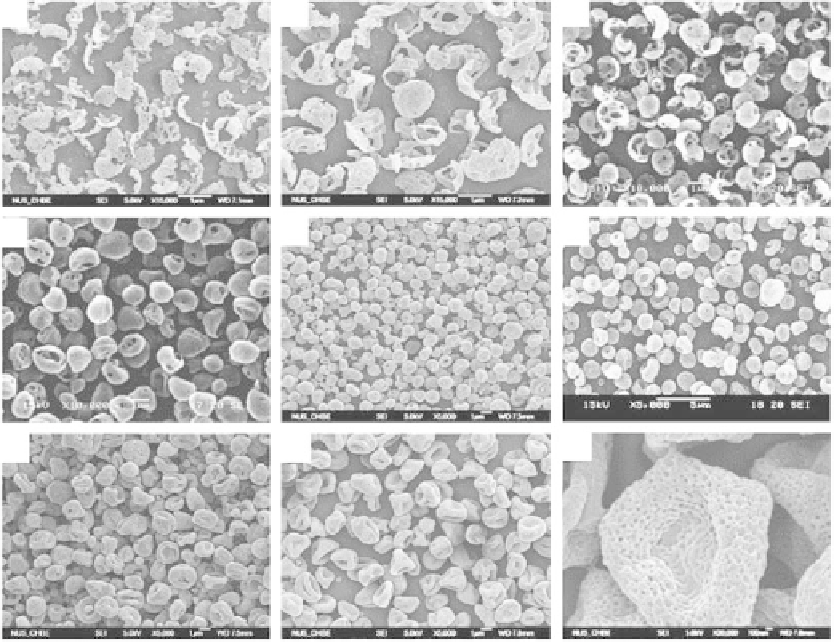Biomedical Engineering Reference
In-Depth Information
(a)
(b)
(c)
(e)
(f)
(d)
(i)
(g)
(h)
FIGURE 11.13
The effect of concentration on the particle morphology with setup b is as follows: (a) 1%,
(b) 2%, (c) 4%, (d) 6%, (e) 8%, (f) 10%, (g) 12%, (h) 14%, and (i) high magnifi cation of (h) (acetonitrile,
paclitaxel
=
5%, fl ow rate
=
0.25 mL/h,
V
n
=
10 kV and
V
r
=
7.5 kV). (Reprinted from Xie, J.W. et al.,
J. Colloid Interface Sci.
, 302, 103, 2006. © Elsevier Science. With permission.)
TABLE 11.1
Infl uence of the Liquid Flow Rate and Drug Concentration on Particle Size
Flow Rate
MPHB
Concentration
in Ethanol (%)
1 mL/h
2 mL/h
3 mL/h
MMAD (
µ
m)
GSD
MMAD (
µ
m)
GSD
MMAD (
µ
m)
GSD
0.5
1.58
±
0.05
1.18
±
0.03
2.07
±
0.07
1.17
±
0.02
2.51
±
0.07
1.23
±
0.03
2.0
2.22
±
0.02
1.18
±
0.03
3.04
±
0.03
1.22
±
0.03
3.43
±
0.17
1.28
±
0.01
3.0
2.69
±
0.05
1.37
±
0.02
3.98
±
0.05
1.37
±
0.02
4.55
±
0.05
1.29
±
0.05
Values are means
±
SD of 10 consecutive measurements at 1 min intervals. Each measurement shows a mass median aero-
dynamic diameter (MMAD) and GSD, and they were considered as independent aerosol parameters. The mean with its SD
was calculated for both parameters.
Reyderman et al. generated excipient-free microspheres of cholesterol using electrospraying
with a melting precursor under atmospheric pressure and controlled temperature [56]. Cholesterol
was chosen as the model compound to study the behavior of melts during the electrospraying.
Moreover, the chemical structure of cholesterol is analogous to diverse steroids, suggesting that the
melt-electrospraying can be used to prepare water-insoluble steroid microspheres for a sustained












